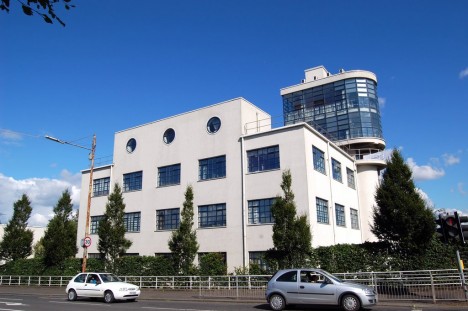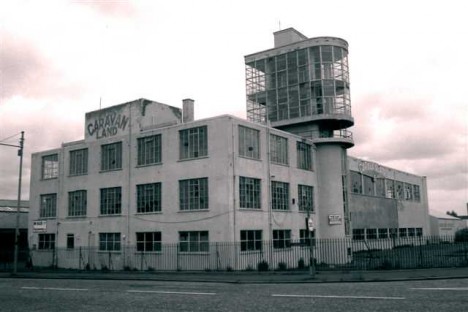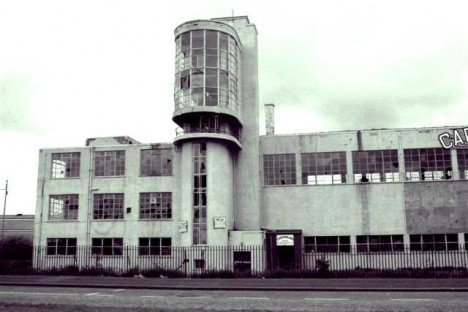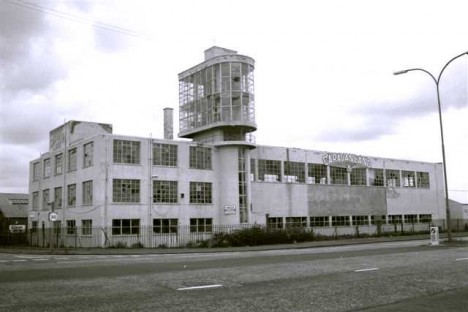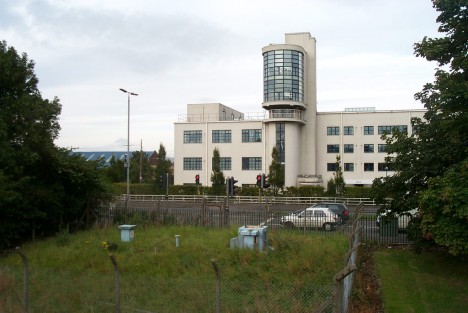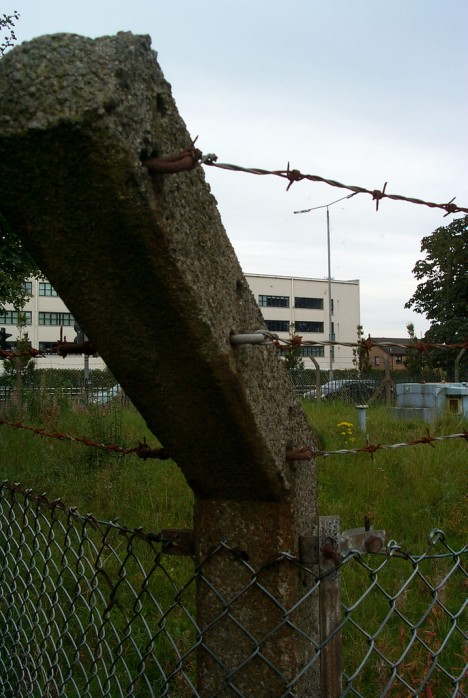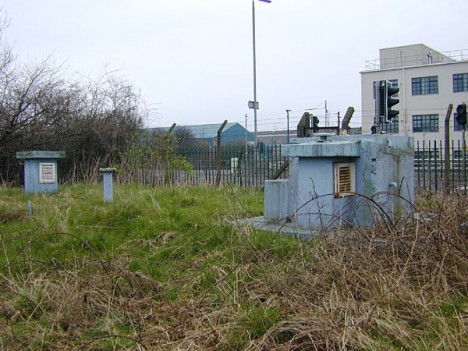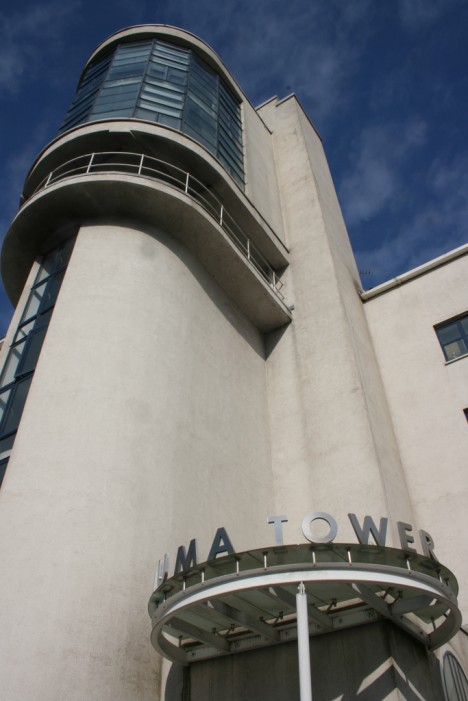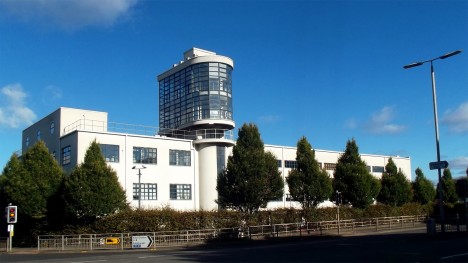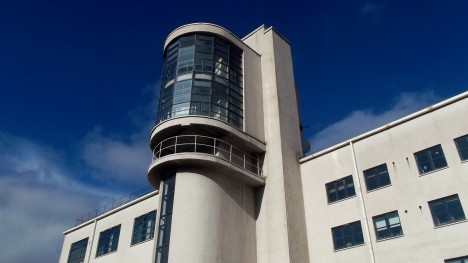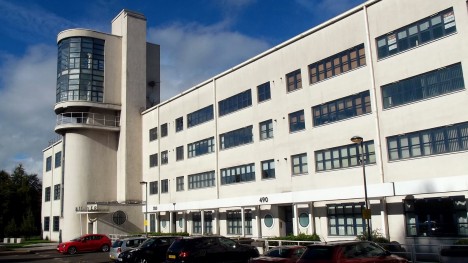By the early 1980s, a new round of economic upheaval associated with Thatcherism saw the iconic Luma Light Bulb building located west of Glasgow’s city center and south of the River Clyde enter into a second, much longer period of dereliction.
The toxic combination of shifting economic fortunes, labor strife and the general decline of industry in postwar Great Britain resulted in operations at the once-proud factory gradually growing dim and finally fading to black. After a short spell of abandonment, the building was bought by Caravan Land with the tower adapted to house two of the company’s recreational vehicles. The above images date from 1986.
The area around the factory still holds some ties to the past. The above photos by Flickr user Mike Forsyth (calligrafix) feature some unusual points of view that take in the neighboring disused Royal Observer Corps bunker.
By 1990 the unmaintained building was suffering from a leaky roof and after repeated break-ins by squatters and vandals many of its windows had been shattered, encouraging and exacerbating damage dealt by Scotland’s notoriously damp weather. Time was running out on the Luma Lightbulb Factory… that it remained one of the last Art Deco buildings still standing in Glasgow’s western suburb of Linthouse was a tribute to its robust design but Glasgow City Council’s Planning Department could not wait forever for a buyer to be found.
Finally in 1993, community-based Linthouse Housing Association Ltd purchased the building and its associated land after the asking price fell from £500,000 to £150,000. Renovation and repurposing were not to occur without a series of caveats, however, the main one being the city Planning Dept.’s insistence that it was essential to retain and build upon the structure’s Art Deco theme. Good on ’em, lads!
